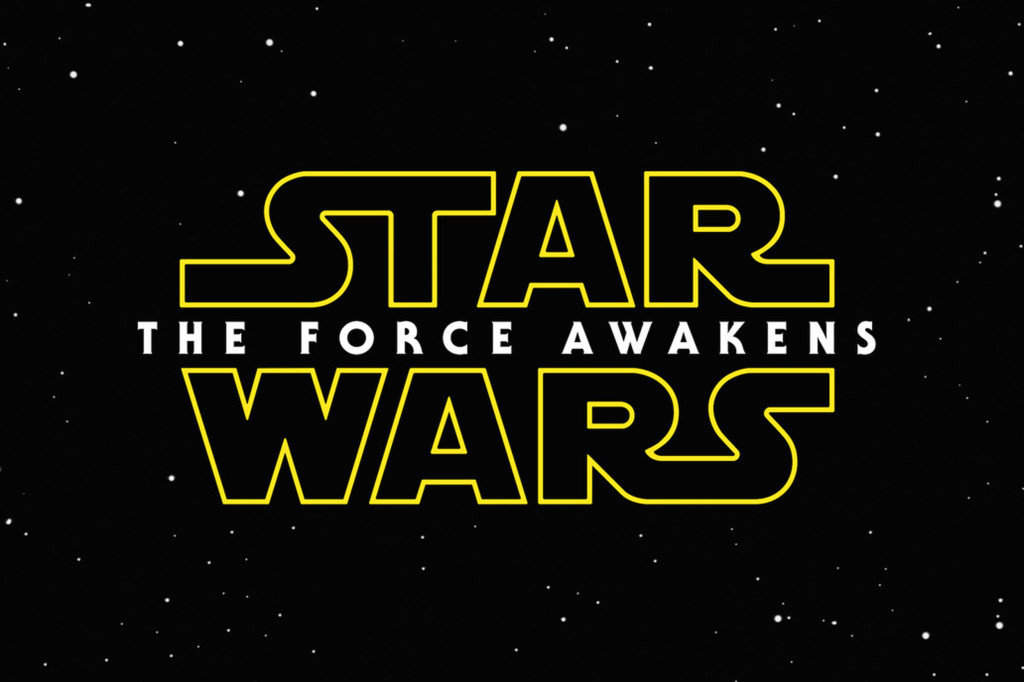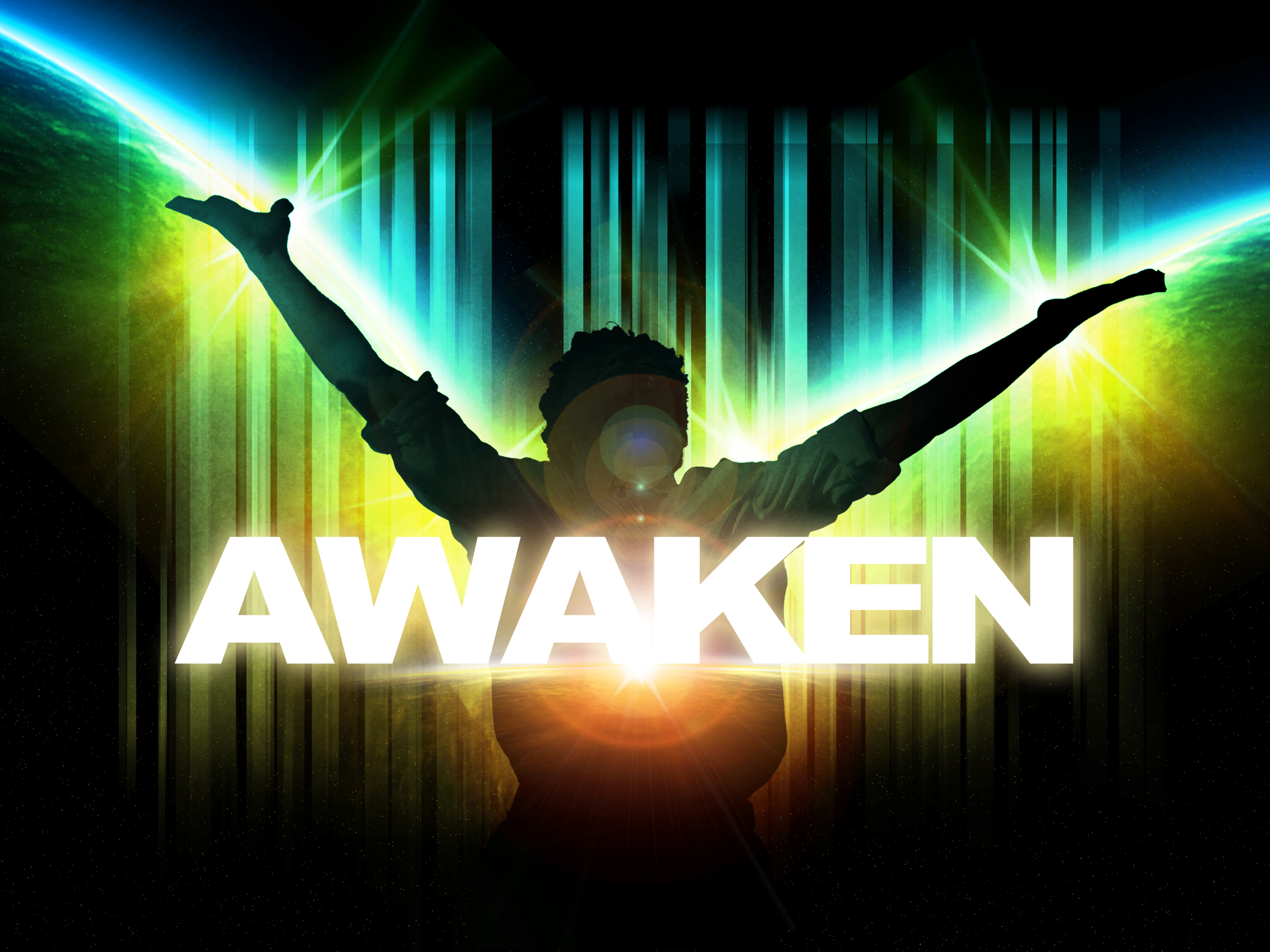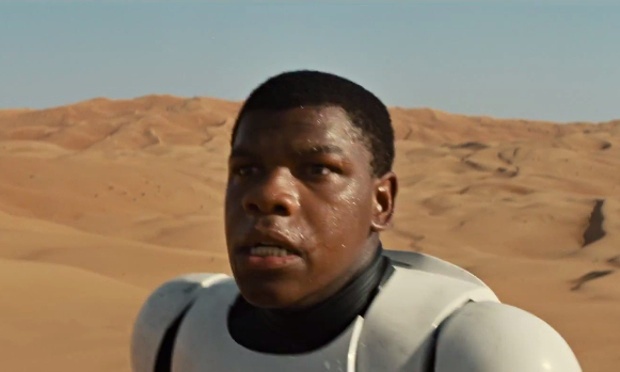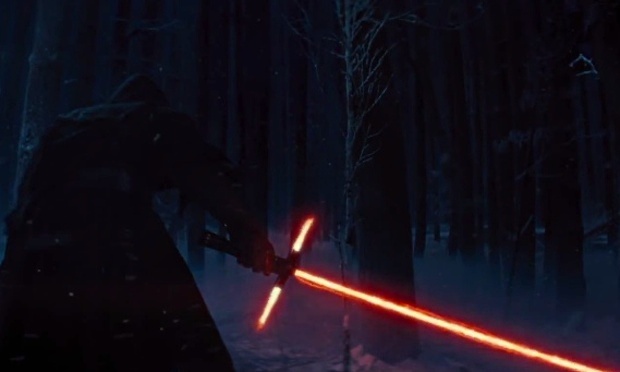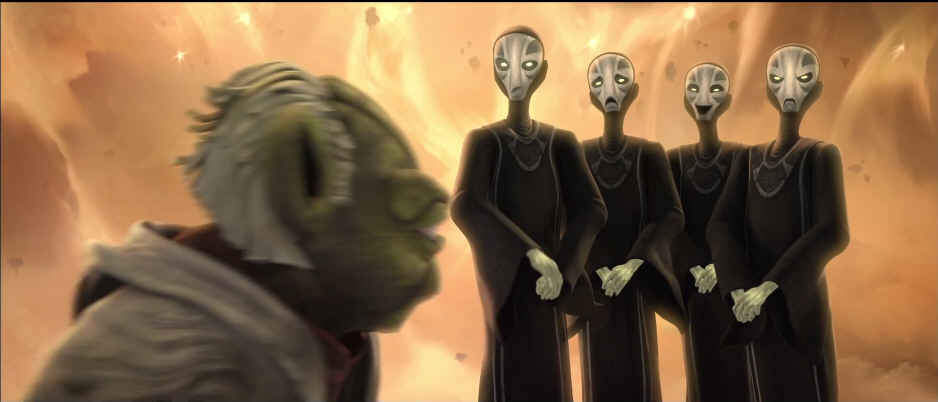A Linguistic Approach to the Star Wars Teaser Trailer
by Joseph Tavano
If we study what the narrator said (and did not say), there’s a lot we can learn about who he is, and why he is saying what he is saying.
“There has been an awakening. Have you felt it? The dark side, and the light.”
One declarative sentence. One question. One fragment. Fifteen words. At first, it doesn’t appear like much. Maybe it’s just some nonsense fluff that sounds cool. But, if one were to listen a little closer, we can discern a few interesting things. Let’s break it down.
It is not a monologue.
The narrator was not speaking to the audience, or the void, or to himself. It is not a speech, or any other type manuscript being read aloud. This is dialogue—language communicated from one person to another. It is being spoken by the narrator to another being. The narrator asks a pointed question to a specific person. He wants to know if this person has felt an awakening.
The narrator was alone.
If we might assume this dialogue was unedited, the narrator did not stop to get an answer to his question. He went on to embellish his original declaration (There has been an awakening/The dark side, and the light). If he did not wait for an answer to his question, he was alone. The person he is conversing with is not with him.
The narrator is sending a transmission.
This is a transmission to someone far away. The narrator has information he needs to tell another person. He believes an awakening is something this other person (the recipient) needs to know. By asking this recipient if they felt it, he is seeking confirmation that an awakening is also happening where the recipient is. But, there’s more.
These two beings understand what is going on.
Think about the language the narrator chooses to use. AN awakening. Not THE awakening, or THE FORCE in particular has awakened. Nope. The narrator chooses to say, “There has been an awakening,” as if this is something natural; it’s like an awakening is a phenomenon that is unpredictable but expected, based on the laws and physics of the galaxy far, far away. For comparison, the language is similar to a natural disaster, or a solar flare. There has been an earthquake. Have you felt it? Both parties absolutely understand what an awakening is; the more important message is that one has occurred. This means that, to the narrator and the recipient, an awakening is not a mind-blowing concept like it is to us.
We don’t know if the narrator felt it.
The narrator then requests confirmation that the recipient has felt an awakening. Has the narrator felt it also, or does the narrator just have the information that the awakening has occurred, and seeks one who can feel it to confirm? This may preclude the narrator from being a Jedi, or a Sith, or even a Force user altogether.
The narrator is not a Jedi, or a Sith.
Jedi understand the light side of the Force. Sith understand the dark side of the Force. By their own dedication, they do not tap into both. By definition, if they were to do so, they would not be Jedi or Sith. This means that (if the narrator felt it) the narrator is neither Jedi nor Sith, and the recipient is certainly neither Jedi nor Sith.
Awakenings can take different forms.
“The dark side, and the light.” This fragment is informative, and details more specifically what is involved in the awakening, and what can be felt. The dark side is involved in the awakening and can be felt, and the light side is involved in the awakening and can be felt. This means that we can infer that awakenings take different forms. Perhaps there are dark side awakenings, light side awakenings, and balanced awakenings? If they did not take different forms, this last fragment would be unnecessary information. If awakenings only took one form, saying this would be insulting to the recipient. It would be like telling someone water is wet. If this awakening involves the dark side and the light, perhaps the Force is more than balanced—maybe it is unified? I’ve written about this before.
Why a unified Force, and not a balanced Force?
If the Force was balanced, it would be similar to the state of things in episodes one through six, only both sides would be in equal balance. The dark side and the light side in this state are dipolar. Equal and at opposite ends of a spectrum. In that state, the clearest thing to say would be, “the dark side has awakened,” or, “the light side has awakened,” or, the dark side as well as the light side have awakened.” One awakening and the other awakening would be, logically, two separate awakenings. But that’s not the scenario presented to us in the trailer. It is only an awakening. Therefore, I speculate that a balanced Force has led to the Force becoming unified as the same mystical energy field as always, but not dipolar. The narrator chooses to describe this by unifying the two poles in his message—the dark side and the light. They are joined linguistically. They are joined in an awakening.
Who in the Galaxy Far, Far Away is qualified to discuss the Force at this level?
Not the Jedi, they rejected the dark side wholly. Not a Sith, they eschew the light at all costs. The only other beings in canon with a higher knowledge of the Force are the Anchorites on Mortis, and the Force Priestesses that trained Yoda. However, these beings both appeared on the Clone Wars series. I do not see a main Star Wars episode drawing its central story idea from episodes of the television series. The source material is just too esoteric. Star Wars episodes define the franchise and lead it forward.
But, there is another possibility.
There is another concept that George Lucas had kept in his back pocket ever since he penned the early drafts of The Star Wars. A concept he never expanded much, but one he has fondly discussed, albeit only a few times.
The Whills
“Originally, I was trying to have the story be told by somebody else (an immortal being known as a Whill); there was somebody watching this whole story and recording it, somebody probably wiser than the mortal players in the actual events. I eventually dropped this idea, and the concepts behind the Whills turned into the Force. But the Whills became part of this massive amount of notes, quotes, background information that I used for the scripts; the stories were actually taken from the Journal of the Whills.”
–George Lucas
[source: Star Wars: The Annotated Screenplays (1997)]
Does this sound like the narrator to you? A watcher from an outside perspective, who understands all of the Force, who knows exactly what is going on with an awakening, and is sending a transmission to another person on an equal or greater level than themselves. That voice is neither evil nor benevolent. It is deep and otherworldly—immortal, perhaps. And, let’s consider that J.J. Abrams has been dedicated to tapping into the original sources and core concepts that define Star Wars, taking them further than ever before. The Whills fit that criteria perfectly. Therefore, I believe there is only one conclusion I can draw:
The narrator is a Whill.
Could I be wrong? Yes, absolutely yes. All of this may be so far from the truth that it will be laughable one year from now. It could be the ravings of a person who has thought about a teaser trailer way too much. After all, The Phantom Menace had a series of teaser trailers with dialogue that never entered the movie, and were merely tone poems for the sake of character introductions and marketing. What the narrator says may not matter at all to the story of Star Wars: The Force Awakens.
But, maybe—just maybe—it matters. Maybe it is crucial. Maybe J.J. Abrams is wrapping his story in mystery, giving us clues to follow, giving us a puzzle to solve. Maybe all of it is important, and worth our attention and speculation. He’s been known do such a thing before. Maybe the Whills are in the Sequel Trilogy.
-JT
Joseph Tavano was born just months before Luke found out who his father was, and has been fortunate to have had Star Wars in his life as long as he can remember. Growing up just outside of Boston, Massachusetts, he can remember substituting sticks for lightsabers and BMX bikes for speeders. He loved Droids and Ewoks, and in 1984, when he embarked up a lifelong interest in martial arts, it felt like Jedi training. During the dark times, books like The Essential Guide to Characters sustained him before Star Wars roared back into the limelight with Shadows of the Empire, the special edition re-releases, and the prequels, which he loves. Nowadays, he’s happy to share his love of Star Wars with his daughter; they watched every episode of The Clone Wars together. Though an accomplished drummer, he doesn’t crave adventure (as much) any more, and prefers his old haunts in Salem, Massachusetts, where he resides with his wife. He owns and operates RetroZap.com, a site for in-depth analysis of film, TV and other narrative art (mostly Star Wars), and is working on his first novel. Buy him a glass of Scotch and he’ll return it in kind.

